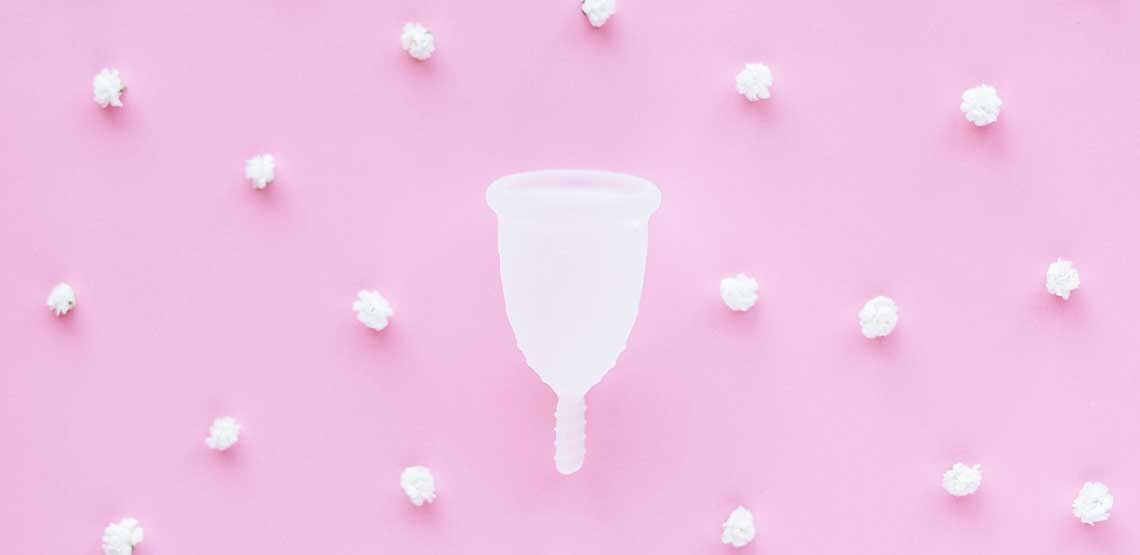How to Use a Period Cup
Menstrual care and hygiene have certainly come a long way. As a society, we’ve come to a greater acceptance of menstrual care. But, although we’ve come a long way, there is still much progress to be made. Once taboo, women can more freely discuss their menses and menstrual hygiene options. One of the most recent options is the period cup, otherwise known as a menstrual cup or menstrual disc.
What is a Period Cup?
Unlike tampons and menstrual pads, a menstrual cup is a reusable product meant for feminine hygiene. It is small enough to fit comfortably into the vagina and shaped like a funnel or upside-down bell. The cup is made of a rubber or silicone material and keeps its shape, despite being very flexible. It catches and collects menstrual fluid. At this time, a variety of brands offer variations of the period cup.
- Moon Cup
- Keeper Cup
- Lena Cup
- DivaCup
- Lunette Menstrual Cup
Although most period cups are reusable, there are disposable cups for women who prefer not to reuse.
How is a Period Cup Different from Other Products?
Period cups differ from other menstrual products in the following ways:
- In contrast with tampons, which are also inserted into the vagina, period cups don’t carry the same risk for toxic shock syndrome (TSS). Because they collect blood instead of absorbing it, the cups don’t have the same propensity for bacterial infections.
- Period cups can hold a more considerable amount of liquid than tampons or pads, making them less likely to leak and require less attention. For example, a cup can hold up to two ounces, while a tampon can only hold one-third of an ounce.
- Period cups are suitable for those who are budget-conscious because they’re reusable. Over time, the cost for tampons and pads can add up. The one-time price for multiple uses makes the period cup much more budget-friendly.
- Sexual intercourse is possible when using the soft, disposable types of period cups. A woman’s partner can’t feel the cup, and there’s no need to worry about leaks.
- Tampons and pads create environmental waste and can block the plumbing. Period cups, on the other hand, are reusable and eco-friendly.
Choosing a Period Cup
The process for using a period cup is a little different than what most women are used to, but it’s relatively simple. First, determine what size you’ll be using. To decide on the right size, you should take into account:
- Whether you’ve had a vaginal birth
- Cervix length
- Your typical menstrual flow (heavy vs. light)
- Your pelvic floor strength
- The firmness and flexibility of the cup.
- The capacity of the period cup
Related Search Topics (Ads)
Small cups are best for women under 30 who have not had vaginal births. Large cups work best for women over 30 or have had vaginal births, or typically have a heavy flow. In case you have questions regarding choosing a size and type, it’s best to consult with a family doctor or your gynecologist before switching to a period cup.
Steps on How to Use Your Period Cup
For people who usually use tampons, a period cup might be an easy transition, as the process is much the same.
Placement:
- Wash your hands.
- Before interesting a cup, lubricate the rim of the cup with water or a water-based lubricant. This initial step makes the process more comfortable, especially during your first use.
- Fold the cup in the method most comfortable for you:
- The C-fold or U-fold presses the sides of the cup together so that the rim forms a C or a U shape.
- The Punch-down fold pushes the center of the rim down into the base, forming a triangle or V shape.
- The 7-fold presses the sides together: press the sides of the cup together, forming an oval. Then fold one side diagonally, resembling a number 7.
- The Origami Fold pushes the center of the rim down, but not as far as the punch-down fold. Push the rim only half-way down and fold the right corner down to the base of the left side.
- Insert the cup into the vagina, like a tampon. Once the entire cup is in the vagina, the cup should pop open. You may need to slide or rotate the cup for it to pop open or fit comfortably. Once fitted correctly, it creates an airtight seal.
- When it’s in the proper position, you shouldn’t feel the cup.
- Some women will check to feel for the rim to see if it’s placed correctly.
Removal:
- Wash your hands.
- Place your index finger and thumb together into the vagina. Gently feel for the stem and base of the cup.
- Release the cup seal by pinching the base, then gently pulling the cup out.
- Once out, empty the cup into the toilet.
Important factors to remember:
- You can jump, sit, stand, and exercise without the cup falling out.
- The period cup can remain for 6-12 hours without emptying.
- Do not leave the cup in for more than 12 hours.
- How long a reusable period cup lasts depends on the type of cup, brand, and use.
Pros and Cons of a Period Cup
Period cups are reusable, eco-friendly, and safer to use than tampons. However, most of their negative aspects come from their lack of convenience. It’s challenging to wash and reuse period cups in public restrooms due to the lack of privacy. It’s recommended that period cups be sanitized — preferably by washing with hot water or boiling them — in between menstrual periods. Lastly, some women might feel squeamish or uncomfortable handling menstrual blood and inserting the cup into their vagina, especially when first using the period cup.
In summary, a period cup is a safe and new option for women to use during their menses. What type of menstrual hygiene method they use is a personal choice. A period cup is an excellent choice for women who no longer want to use bulky pads or tampons.


